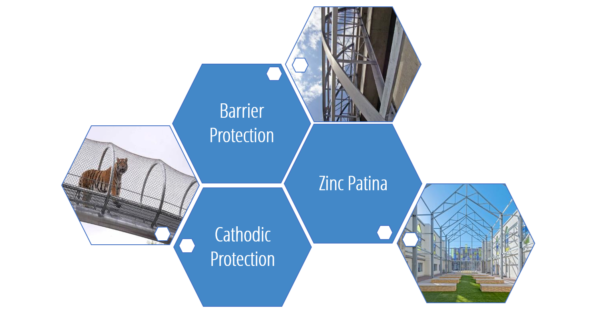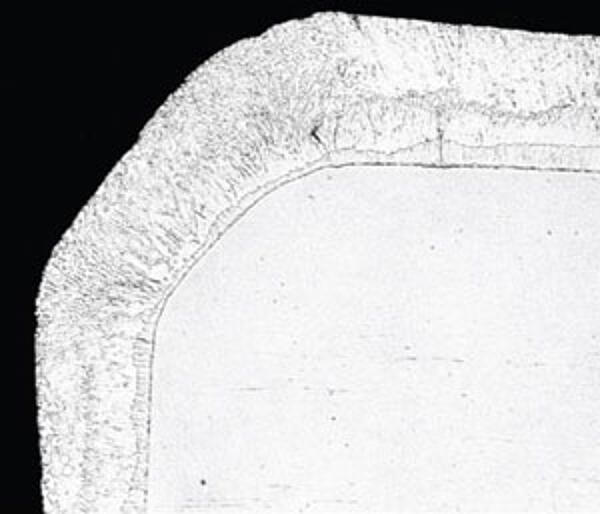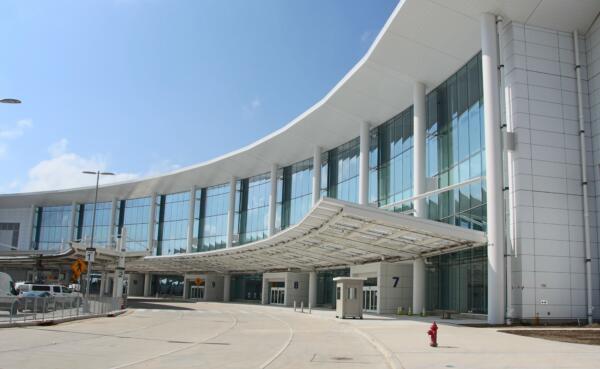Hot-Dip Galvanized Steel Benefits
Hot-dip galvanizing has been specified to combat steel corrosion for more than 100 years; however, the specification and use of galvanized steel evolves constantly as new markets emerge. Though corrosion resistance is inherent any time hot-dip galvanizing is utilized, there are a number of other benefits including low initial and life-cycle costs, durability, longevity, availability, versatility, sustainability, and aesthetics that lead to the specification of galvanized steel. For more detailed information on these benefits, please take the Core Galvanize It! seminar.
Corrosion Protection
Steel is an abundant, efficient building material that provides specifiers design freedom. However, for projects exposed to the atmosphere and other harsh environments, it is critical to coat the steel for corrosion protection. Often large construction projects target a 50-100 year design life, highlighting the need for durable, long lasting corrosion protection. Hot-dip galvanizing (HDG) provides three levels of corrosion resistance to steel: barrier protection, cathodic protection, and the zinc patina.

Hot-dip galvanizing, like other coatings, isolates the steel from the environment providing basic, barrier protection. The intermetallic layers of the zinc coating are tightly bonded (~3600 psi) to the base steel making damage difficult. Galvanizing also provides cathodic protection, meaning the zinc will sacrifices itself to protect the underlying steel. Even if the coating is scratched, the surrounding zinc will continue to resist corrosion of the steel.
In addition to the barrier and cathodic protection, hot-dip galvanizing has a third level of protection - the zinc patina. As zinc is exposed to the environment, it naturally forms by-products on the surface which slows the corrosion rate and acts as an additional environmental barrier. When the zinc patina is fully developed, hot-dip galvanized steel will corrode at approximately 1/30th the rate of steel in the same environment.
Durability
Another aspect of hot-dip galvanizing is proven, unmatched durability, even in harsh conditions. This is in part thanks to the galvanized coating's abrasion resistance, uniform protection and complete coverage. The intermetallic layers formed in the galvanizing kettle are metallurgically-bonded to and harder than the base steel, while the top, pure zinc layer is more ductile and able to absorb impact. Together these layers of the zinc coating provide unparalleled abrasion resistance.


Hot-dip galvanizing also provides uniform protection and complete coverage. The zinc coating grows perpendicular to the steel, so corners and edges have the same thickness as flat surfaces. Furthermore, the total immersion process ensures hollow and tubular structures are coated and protected, inside and out. This complete, uniform coverage means there are no easy targets for corrosion to attack.
Longevity
Hot-dip galvanized steel is often utilized in some of the harshest environments imaginable, yet it provides maintenance-free longevity for decades. The corrosion resistance of hot-dip galvanizing varies according to its surrounding environments, but generally corrodes at a rate of 1/30 of bare steel in the same environment. The most common exposure for hot-dip galvanized steel is in the atmosphere. According to real-world studies and data, hot-dip galvanizing can provide more than 70 years of maintenance free corrosion protection in the most corrosive atmospheric exposure (industrial).

In addition to the atmosphere, hot-dip galvanizing is commonly used to protect steel embedded in soil and/or concrete or submerged in water. Though the corrosion mechanisms and life expectancy is different in each, galvanized steel has a proven track record of longevity in all of these environments.
Availability & Versatility

Hot-dip galvanized (HDG) steel is versatile and readily available. Galvanizers are found throughout North America, and thanks to the factory-controlled process, a wide variety of steel shapes and sizes can be hot-dip galvanized 24/7/365 - rain or shine. Furthermore, zinc solidifies upon withdrawal from the bath, so there are no delays for curing when schedules are tight. On the other hand, hot-dip galvanized steel can be easily stored or stocked outside, without degrading the coatings integrity, until it is ready to be erected.
Hot-dip galvanized steel is made of two primary components zinc and steel. Both are natural, abundant elements in the Earths crust; in fact iron ore is the 4th most abundant element, and zinc is the 24th. In addition to being abundant, both steel and zinc are 100% recyclable without the loss of any chemical or physical properties. This means they can be used as zinc and steel (or galvanized steel) again and again - creating an infinitely renewable resource.
Sustainability
Sustainable development is the social, economic, and environmental commitment to growth and development that meet the needs of the present without compromising the ability of future generations to meet their own needs. As the social pressure continues to mount to construct the built environment sustainably, specifiers are becoming more invested and analytical in the materials they choose. Hot-dip galvanized steel's maintenance-free longevity provides positive environmental and economic benefits to future generations.

Environmental Advantages
Zinc exists naturally in the air, water, and soil in abundance. Furthermore, zinc is essential to all life - from the smallest microorganisms to humans. As previously stated, zinc and steel are both 100% recyclable without the loss of properties - making galvanized steel an infinitely renewable material.
In addition to the natural, abundant elements that create hot-dip galvanized steel, the material has little impact on the environment. Maintenance-free longevity means no additional energy or resources are required while galvanized steel is in use. Eliminating maintenance also eliminates emission or waste outputs, as the only thing the hot-dip galvanized coating adds to the atmosphere are zinc byproducts, which already exist there naturally. Therefore, the environmental impact of hot-dip galvanizing is isolated to the production phase of the material, and extrapolated over the decades of service, until ultimately the steel and zinc are recycled. The AGA has completed an industry-wide, third-party verified Environmental Product Declaration (EPD) to detail the impact of producing hot-dip galvanized steel.